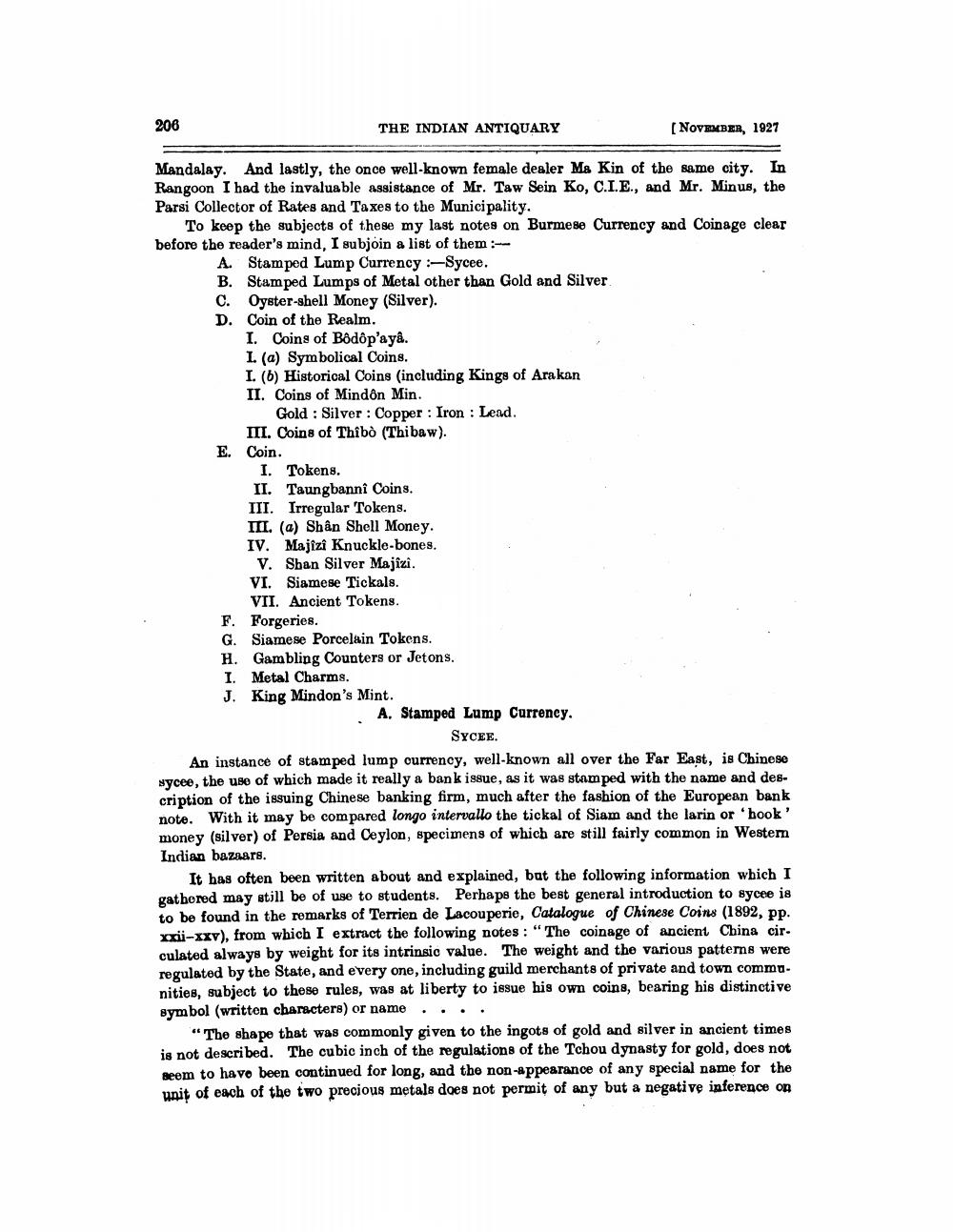________________
206
THE INDIAN ANTIQUARY
(NOVEMBER, 1927
Mandalay. And lastly, the once well-known female dealer Ma Kin of the same city. In Rangoon I had the invaluable assistance of Mr. Taw Sein Ko, C.I.E., and Mr. Min us, the Parsi Collector of Rates and Taxes to the Municipality.
To keep the subjects of these my last notes on Burmese Currency and Coinage clear before the reader's mind, I gubjoin a list of them
A. Stamped Lump Currency Sycee. B. Stamped Lumps of Metal other than Gold and Silver C. Oyster-shell Money (Silver). D. Coin of the Realm.
I. Coins of Bôdôp'aya. 1. (a) Symbolical Coins. I. (6) Historical Coins (including Kings of Arakan II. Coins of Mindôn Min.
Gold : Silver : Copper : Iron : Lead. III. Coins of Thibò (Thibaw). Coin.
I. Tokens. II. Taungbanni Coins. III. Irregular Tokens. II. (a) Shân Shell Money. IV. Majizi Knuckle-bones.
V. Shan Silver Majizi. VI. Siamese Tickals.
VII. Ancient Tokens. F. Forgeries. G. Siamese Porcelain Tokens. H. Gambling Counters or Jetons. I. Metal Charms. J. King Mindon's Mint.
A. Stamped Lump Currency.
SYCEE. An instance of stamped lump currency, well-known all over the Far East, is Chinese sycee, the use of which made it really a bank issue, as it was stamped with the name and description of the issuing Chinese banking firm, much after the fashion of the European bank note. With it may be compared longo intervallo the tickal of Siam and the larin or 'book' money (silver) of Persia and Ceylon, specimens of which are still fairly common in Westem Indian bazaars.
It has often been written about and explained, but the following information which I gathored may still be of use to students. Perhaps the best general introduction to sycee is to be found in the remarks of Terrien de Lacouperie, Catalogue of Chinese Coins (1892, pp. Xxii-xxv), from which I extract the following notes: "The coinage of ancient China cir. culated always by weight for its intrinsic value. The weight and the various patterns were regulated by the State, and every one, including guild merchants of private and town commo. nities, subject to these rules, was at liberty to issue his own coins, bearing his distinctive symbol (written characters) or name....
"The shape that was commonly given to the ingots of gold and silver in ancient times is not described. The cubic inch of the regulations of the Tchou dynasty for gold, does not seem to have been continued for long, and the non-appearance of any special name for the unit of each of the two precious metals does not permit of any but a negative inference on




